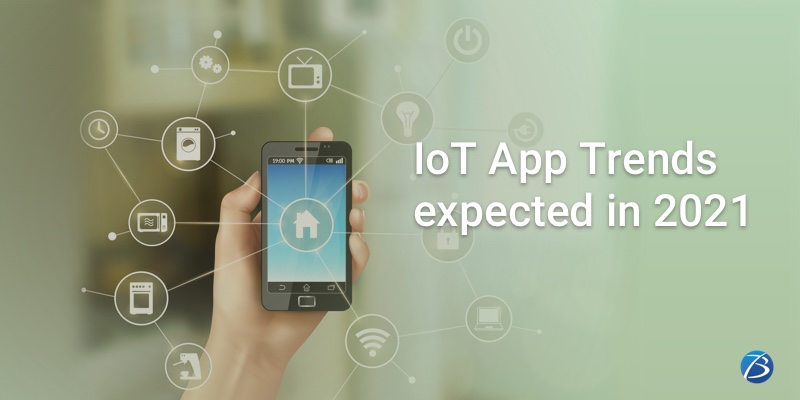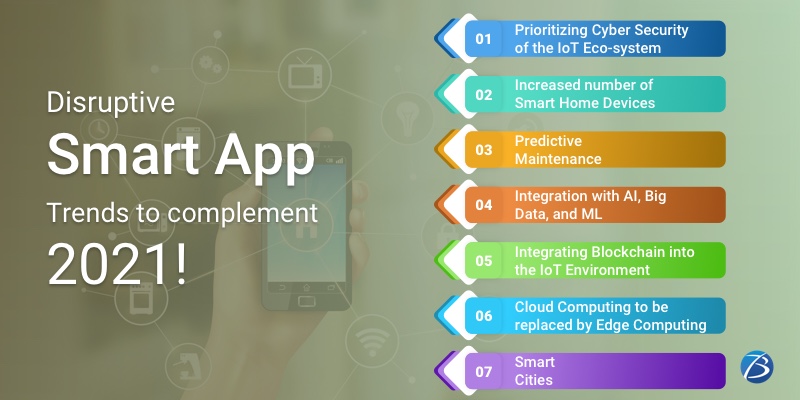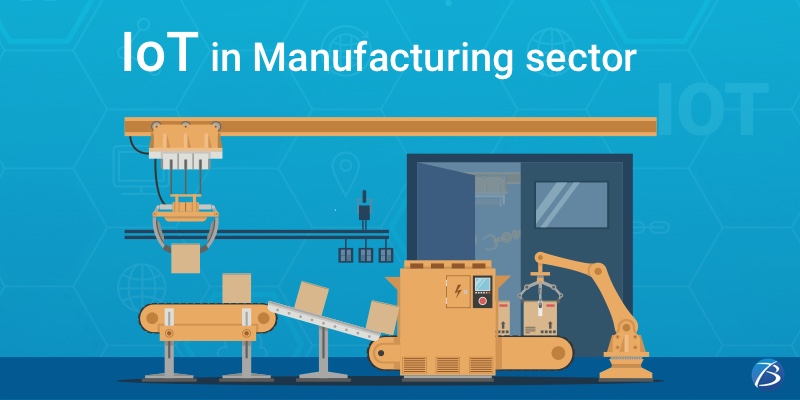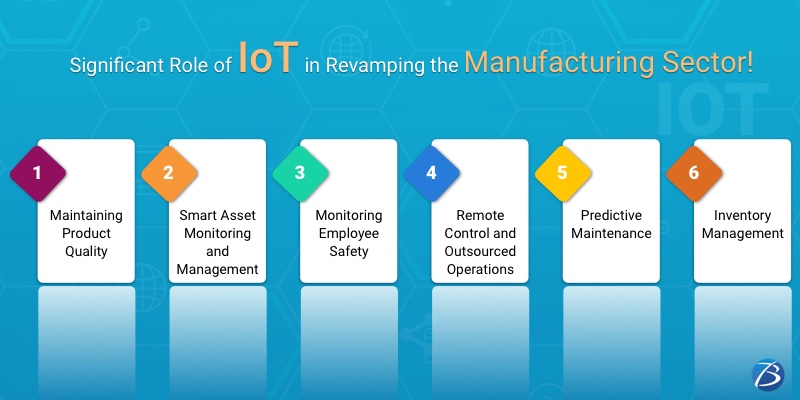Ground-breaking IoT Trends that will Rule the Market in 2021


The rampant adoption of IoT has been setting new records in the technology world since its inception. IoT’s prominence will continue to flourish for the years to come and in the year 2021, this technology will serve many industries with more data-intensive solutions.
Let’s look at some statistics put forth by International Data Corporation (IDC), as per a post on BusinessWire.
The worldwide spending on IoT will return high growth rates by the year 2021 and attain a CAGR of 11.3%.
The worldwide expenditure on IoT in the year 2022 will cross the $1 trillion mark.
These estimates by IDC experts make it evident that the IoT sector will witness heavy growth in the upcoming years. This sector will also set some ground-breaking trends that will revolutionize the market altogether.
So, in this post, we are going to peek into such pioneering IoT market trends which may prove game-changers for several industrial sectors. We will take a look at how these trends will enhance the IoT app solutions and reshape several businesses.
Top IoT Market Trends that will Disrupt the Tech World in 2021!

IoT, Wearable Technology and Healthcare Sector
‘IoT in healthcare’ isn’t a new concept but with the advent of Covid-19, wearable devices and related IoT app solutions are being used more persuasively. Since the year 2020, remote healthcare solutions are being encouraged for regular check-ups, remote patient monitoring, etc. Virtual care is being provided using smart connected devices. Richer data-driven health services will also be delivered in 2021 and in upcoming years.
Hyper-Automation with RPA and Advanced Algorithms
A set of advanced technologies like RPA, advanced algorithms, process mining, smart analytics, etc. with IoT can be used for hyper-automation in organizations. It may sound similar to automation but isn’t the same. Hyper-automation is based on traditional automation processes and allows organizations to automate numerous processes more effectively, intelligently, and proactively.
IoT and Cyber Security
Security threats like cybercrimes, cyber-physical attacks, IoT attacks, ransomware, crypto-jacking, government-sponsored attacks, etc. are on the rise, especially since people have started working remotely.
Vital organization data like personal sensitive information of employees, and clients, banking details, details of citizens on government records, etc. is constantly at risk of being stolen by hackers and cyber-criminals for selling it to black markets. Owing to this, the IoT app developers and security specialists are working on developing robust IoT-enabled security strategies and also on upgrading the IoT apps to reinforce the security firewall.
IoT Combined with AI and ML Capabilities
AI and ML have provided great value to businesses by facilitating automation of mundane tasks, simplification of work, and collecting accurate data. Furthermore, in tough times of the pandemic, these technologies have ensured uninterrupted delivery, supported critical processes for companies and governments, helped in social distancing, and understanding the Covid-19 virus, etc.
In the year 2021, MI and AL, together with IoT will shape the future of human-machine interactions using data-driven insights. They will change the dynamics of the business landscape innovatively.
IoT and Blockchain
IoT security has long been a matter of concern and Blockchain seems to be a potential solution for this. Blockchain consists of strong protections against data tampering. It locks accessibility to IoT devices, and thus, allows compromised devices present in an IoT network to shut down when required.
So in the future, a myriad number of financial enterprises, governmental institutions, small and large businesses, and even the consumers will be decentralized and self-governing. They will leverage Blockchain to secure their IoT products and services.Recently, Hyundai has extended its support to a Blockchain-based start-up designed specifically for the security of IoT devices and IoT-powered software solutions.
Edge Computing
The data of IoT devices were being stored in cloud storage for a long time, but now, the IoT app solution providers, manufacturers, development services, etc. are thinking about the utility of calculating, storing, and analyzing data to the limit. That means, before sending the complete data from IoT devices to the cloud, it will be transmitted first to a local storage device near the IoT device i.e. on the network’s edge.
Later, this local storage device analyses the data, filters it, sorts it, and calculates it to send it either completely or partially to the cloud, ultimately decreasing the traffic on the network and thus, refraining from any bottleneck conditions. This approach is called “edge computing.”
Edge computing is growing exponentially and may overtake cloud computing in the year 2021, owing to the remote work approach. This approach helps in the proper management of large chunks of data sent by every device. It decreases the overall dependency on cloud storage, due to which apps perform faster with reduced latency. It also leads to lower security costs. Today, giants like Dell, HPE, IBM, etc. are working on creating such solutions for edges having cloud-like features.
IoT and SaaS
While addressing the IoT Trends, we can’t ignore SaaS or Sustainable-as-a-Service. Owing to its low-cost entry, the SaaS model is rapidly becoming popular for designing outputs that will make the lives of people better.
Also, it is estimated by some technology enthusiasts that the Internet of Things is aimed to bridge the gap in connecting individuals and organizations to service-based solutions.
IoT-powered Smart Home Devices and Smart Cities
The discovery of IoT-based smart home devices was initially being mocked by many. However today, their popularity is soaring as these devices have become more innovative and intuitive and not only ensures home automation but also enhances home security. Besides, they help energy conservation and save on electricity bills due to the usage of intelligent thermostats, smart lights, etc.
IoT and modernization have led to another noteworthy accomplishment- smart cities. IoT tools and superfast data transfer of 5G will together lead to improved public transportation, smart parking lots, automatic traffic control, higher security, smart infrastructure, better water management, smart waste management, etc. in the future. Thus, IoT will power the building of sustainable cities and probably a greener future.
IoT for Energy and Resource Management
For energy and resource management, it is important to gain vital insights into how resources are being consumed. Smart app solutions play a vital role in collecting such data. Some applications like in-house temperature management, sprinkler control, etc. help in managing power consumption.
Besides, IoT devices and applications can help in lowering energy spending, optimizing asset management, integrating green energy, identify malfunctions in advance for preventing them, minimizing carbon emissions, effectively combat accidents, outages, blackouts, etc.
Wrap-up:
In the year 2021, IoT trends will enhance drastically, owing to the shift in overall work culture and the current economic changes due to the Covid- 19 pandemic. But challenging times always come with some great opportunities too. This is a great opportunity for every IoT app development company to architect best-in-class solutions that benefit different sectors.
Do you have any other trends in the IoT world to share with us? If yes, do share in the comment below.
Also, let us know if this blog was insightful and connect with us for any details on IoT technologies.



